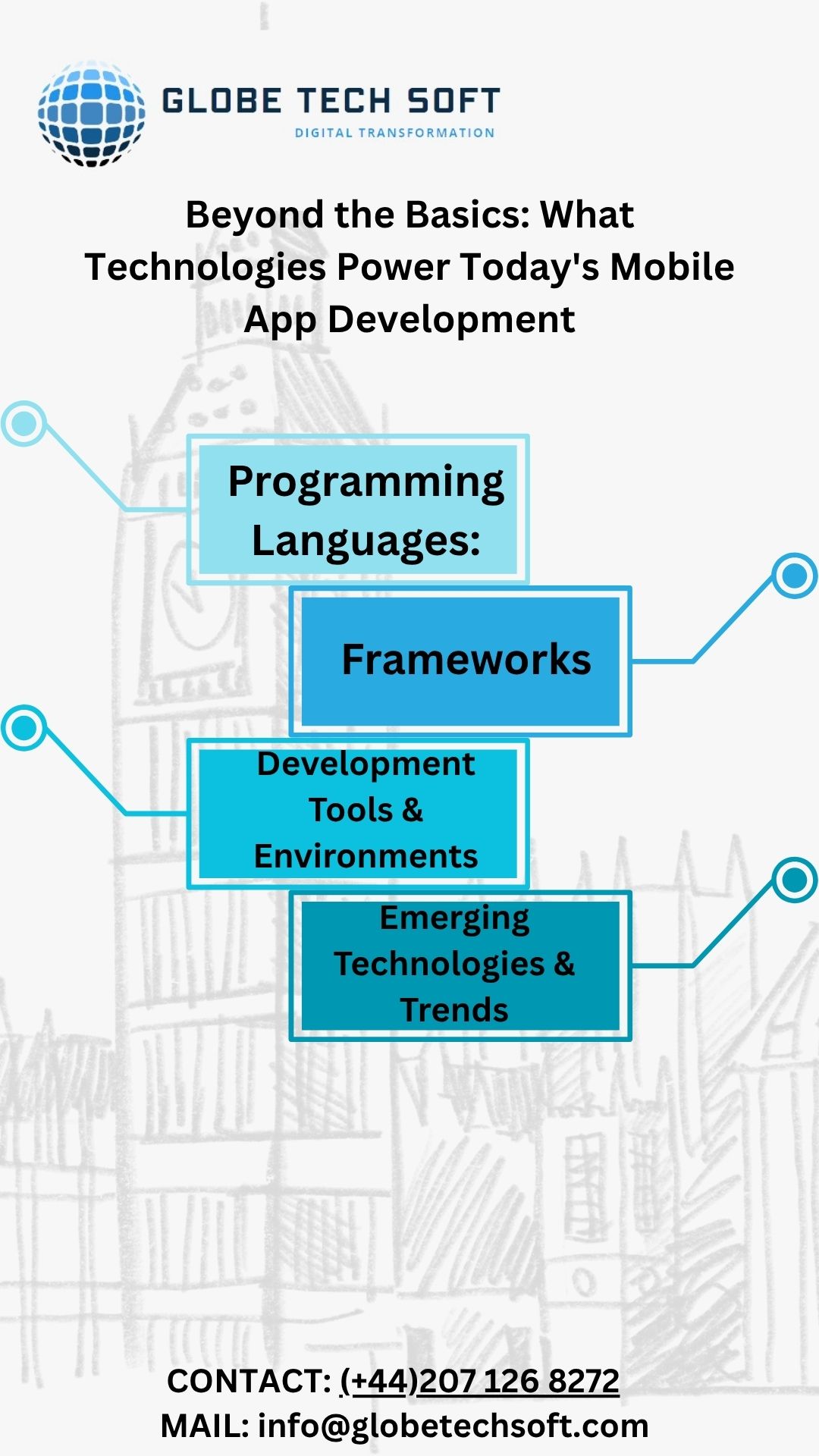
Beyond the Basics: What Technologies Power Todays Mobile App Development?
Beyond the Basics: What Technologies Power Todays Mobile App Development?
In the dynamic world of mobile app development, staying abreast of the latest technologies is crucial. From the operating system’s core to the captivating user interface, a diverse set of tools and languages come together to bring innovative mobile experiences to life. Let’s delve into the key technologies that underpin modern mobile app development.
1. Programming Languages: The Building Blocks
The choice of programming language often depends on whether you’re building a native app (for a specific platform like iOS or Android) or a cross-platform app (that runs on multiple platforms with a single codebase).
- For Native Android Development:
- Kotlin: Google’s preferred language for Android development, Kotlin is concise, safe, and interoperable with Java, offering a modern development experience.
- Java: The long-standing backbone of Android development, Java remains widely used for its stability, performance, and extensive ecosystem.
- For Native iOS Development:
- Swift: Apple’s powerful and intuitive language, Swift is the primary choice for building apps across all Apple platforms (iOS, iPadOS, macOS, watchOS).
- Objective-C: While largely superseded by Swift, Objective-C is still present in many legacy iOS projects and offers strong interoperability with C-based services.
- For Cross-Platform Development:
- JavaScript: A versatile language, JavaScript, often coupled with frameworks, is a dominant force in hybrid and cross-platform app development.
- Dart: Developed by Google, Dart is the language that powers Flutter, enabling fast and expressive UI development for multiple platforms.
- C#: Used with Xamarin, C# allows developers to build native iOS, Android, and Windows apps from a single codebase.
2. Frameworks: Accelerating Development
Frameworks provide pre-built components, libraries, and tools that streamline the development process, saving time and effort.
- Cross-Platform Frameworks:
- React Native (JavaScript): Backed by Facebook, React Native allows developers to build native-like apps using JavaScript and React, known for its “learn once, write anywhere” approach.
- Flutter (Dart): Google’s open-source UI toolkit, Flutter is gaining immense popularity for its ability to create visually stunning, natively compiled applications for mobile, web, and desktop from a single codebase.
- Xamarin (C#): Acquired by Microsoft, Xamarin enables developers to create native apps for Android, iOS, and Windows using C# and the .NET framework.
- Ionic (HTML, CSS, JavaScript): An open-source framework for building hybrid and Progressive Web Apps (PWAs) using standard web technologies.
- Apache Cordova (HTML, CSS, JavaScript): Formerly PhoneGap, Cordova allows developers to build mobile apps using web technologies, leveraging device features through plugins.
- Native Frameworks:
- Android Jetpack (Android): A collection of libraries from Google that helps developers follow best practices, reduce boilerplate code, and write consistent Android apps.
- Cocoa Touch (iOS): Apple’s framework for building iOS applications, providing core functionalities and UI elements.

3. Development Tools & Environments: The Developer’s Arsenal
Beyond languages and frameworks, a suite of tools is essential for coding, debugging, testing, and managing mobile app projects.
- Integrated Development Environments (IDEs):
- Android Studio: The official IDE for Android development, offering a comprehensive set of tools for coding, debugging, and testing Android apps.
- Xcode: Apple’s IDE for developing iOS, macOS, watchOS, and tvOS applications, providing a rich environment for Swift and Objective-C development.
- Visual Studio Code: A popular, lightweight, and highly customizable code editor that supports various languages and frameworks through extensions, commonly used for cross-platform development.
- Version Control Systems:
- Git: Indispensable for collaborative development, Git allows teams to track changes, manage different versions of code, and collaborate efficiently.
- Design Tools:
- Figma, Sketch, Adobe XD: These tools are crucial for designing user interfaces (UI) and user experiences (UX), creating prototypes, and collaborating with designers.
- Testing Frameworks:
- Appium, Espresso (Android), XCUITest (iOS): Tools and frameworks for automated testing of mobile applications, ensuring quality and functionality.
- Backend Services:
- Firebase: A comprehensive mobile and web application development platform by Google, offering services like databases, authentication, cloud storage, and analytics.
- AWS Mobile Hub, Google Cloud Platform: Cloud platforms offering various backend services to support mobile applications, including serverless functions, databases, and APIs.
4. Emerging Technologies & Trends: Shaping the Future
The mobile app landscape is constantly evolving, with new technologies and trends influencing development:
- Artificial Intelligence (AI) & Machine Learning (ML): Integrating AI/ML for features like predictive analytics, chatbots, voice recognition, and personalized experiences.
- Augmented Reality (AR) & Virtual Reality (VR): Creating immersive experiences in mobile apps, particularly for gaming, retail, and education.
- Internet of Things (IoT): Developing apps that interact with smart devices and connected ecosystems.
- 5G Technology: Enabling faster data transfer and lower latency, leading to more responsive and feature-rich applications.
- Low-Code/No-Code Platforms: Tools that allow users to build applications with minimal or no coding, democratizing app development.
7. Post-Launch Support & Maintenance: Ongoing Success
In conclusion, mobile app development is a multifaceted domain driven by a rich ecosystem of programming languages, powerful frameworks, and essential development tools. The choice of technology stack depends heavily on project requirements, target platforms, and desired features. As technology continues to advance, the mobile app development landscape promises even more innovative and exciting possibilities.


